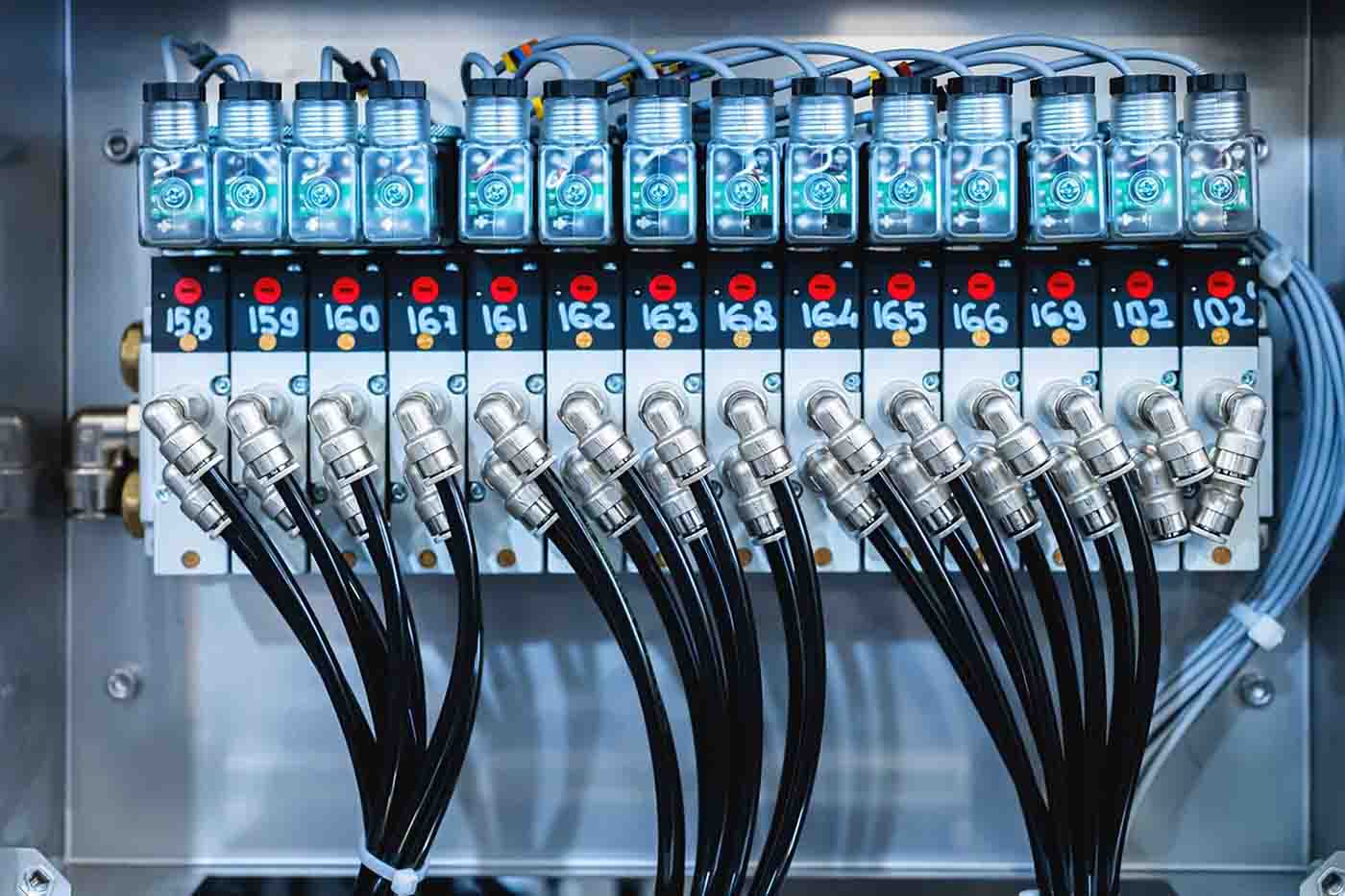
Pneumatic systems are an integral part of many modern industries, including manufacturing, automotive engineering, construction, and many others. The importance of pneumatic technology to the success of so many different sectors means that building and maintaining these systems has become a major industry in and of itself. Each component of a pneumatic system must receive occasional maintenance and care to keep the machinery operating at peak capacity. However, particular attention must be given to the hoses that transport pressurized air to lend the systems their speed and power.
In the following article, we’ll outline some of the best practices to maintain and care for a pneumatic hose. We’ll help you to diagnose common problems, make basic repairs, and perform essential maintenance tasks to ensure the longevity and ongoing efficiency of your pneumatic system. We’ll also help you to determine when it’s time to invest in professional repairs or replace damaged parts entirely.
What Is a Pneumatic Hose?
Pneumatic systems utilize pressurized gases (usually air) to transfer mechanical energy into devices called actuators, which are the components that generate motion in a machine. When a gas is contained in an airtight space and forced into a smaller space, it seeks to return to atmospheric equilibrium. This means that, as the gas attempts to expand to match the surrounding air pressure, it applies equal force to every point in its container. Pneumatic systems take advantage of this by directing this force to the moving parts of a mechanical system.
The key to the successful operation of any pneumatic system is in the hose. It is this element that transfers the pressurized air from one part of the machine to the other. A well-constructed pneumatic hose must be both flexible and very strong. The materials used depend on the application. While all pneumatic hoses must be built to withstand vast amounts of pressure, some must also be designed to be resistant to the elements or to corrosive chemicals that may be present at the jobsite. Some of the best materials for optimizing performance and safety include nylon, polyurethane, and polypropylene.
Hoses Must Be Cleaned Regularly
Pneumatic systems can only function effectively if the air is able to move freely through the hoses. Over time, however, dirt, dust, grime, and moisture will inevitably accumulate on the system’s components. These contaminants can hamper the effectiveness of the system and will eventually cause damage and create an unsafe working environment.
To clean a pneumatic hose, first, turn off the machinery so that you can safely disconnect it from the system. The next step is to wipe the hose with some type of cleaning product. For most hoses, a simple solution of soapy water will work just fine. You can also use your compressor to force air through the hose to flush out any accumulated debris with it.
Next, use an antimicrobial sanitizing solution of some type to prevent the growth of mold on the hose. Before reattaching the hose to the system, make sure that it is thoroughly dry, as moisture inside the hose can hamper the performance of the pneumatic system.
Address Leaks Promptly
Part of the regular maintenance and care of a pneumatic hose includes learning how to diagnose common problems that may prevent the machinery from operating efficiently. When it comes to pneumatic technology, these problems commonly arise because of pressure loss, which prevents the system from generating enough mechanical power to perform its work effectively. Frequently, this pressure loss is the consequence of a leak somewhere in the system.
Pneumatic hoses are often constructed from heavy-duty material, but they can still occasionally become compromised and leak somewhere along the length of the hose. More commonly, however, a leak will develop at a connection point. You can discover leaks by placing a solution of leak detection fluid—available at hardware stores or online—along suspected areas.
Simple leaks, including those arising as a result of a faulty connection, can usually be addressed by your staff. However, more severe ones, such as those that develop in the body of the hose itself, may require the services of a technician.
Invest in Regular Inspections
As with any mechanical system, maintenance and care depend a great deal on occasional professional inspection. The manufacturer will usually include recommendations as to the maintenance requirements of the hose. Typically, a professional inspection should be performed after around 500 hours of use. Of course, this timeline can be accelerated if you have any reason to suspect the hose may be damaged.
When your maintenance professional arrives, they will work their way down a checklist, offering recommendations for repair and replacement, depending on their discoveries. This checklist will include looking for crimps, leaks, and other common problems that may occur in your pneumatic technology.
Store Hoses Properly
To ensure the longevity of your pneumatic hose, you must ensure it is stored properly when not in use. Frequently, hoses degrade or become damaged as a result of improper storage. This can lead to crimping or the accumulation of moisture and harmful debris.
Hoses should be stored in clean, dry spaces, kept safe from contamination by any chemicals being used on site. They should be coiled and prevented from directly contacting the ground. Sunlight can also be very damaging for the material pneumatic hoses are made from, so prevent ultraviolet radiation from reaching your hose by either keeping it in a light-tight container or covering it when not in use.
For More Information
A hose is just one element of a well-constructed pneumatic system, but the entire system should be manufactured from well-made and properly maintained parts for it to operate effectively. At Aberdeen Dynamics, we design pneumatic systems that are held to the highest standards for safety and quality and provide the field service technicians to assist you in keeping things running smoothly. Contact us for more information about how these systems can take your business to the next level.